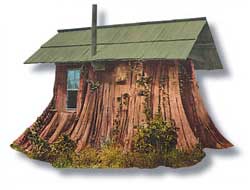Seattle is setting records for tourism, and the region is experiencing unprecedented growth. We could hang out an “unwelcome” sign over Puget Sound and it would likely be as effective as those “no loitering” signs outside Deano’s on East Madison.
One of the problems is that Seattle has become a so-called “supercity,” a place that has so many amenities that it’s a magnet for growth—especially high-end growth that is pricing a lot of people out and creating a new generation of sprawl as people search for affordable housing in the outskirts.
While we can’t stop growth, I think we can also safely say that the days of greasing the skids to hell ought to be over. Seattle doesn’t need any more publicly funded major amenities; we don’t need more world-classness. The amenities we have are choking us just fine.
We need to be skeptical about civic “improvements” that are touted as boosting our appeal. Boosting our appeal? Little Red Riding Hood had enough trouble with wolves without wearing hot pants. Seattle needs to reduce its appeal if it is to recover its “livability.”
Which is why we should seize opportunities to de-amenitize Seattle. That’s the silver lining of the current SuperSonics crisis: At long last, Seattleites are no longer buying the idea that to matter, we must have professional sports. The new owners are likely to buzz off to Oklahoma City once they sample the local “hospitality” of a populace that has been taken for numerous rides by franchise owners and their enablers in government.
While we might miss the basketball itself, few people will miss subsidizing millionaires and high ticket prices in exchange for tax revenue that can’t keep up with the expenses such amenities generate. Has the fact that we have professional basketball, football, and baseball made Seattle more affordable overall or less? Are your taxes lower because they’re here? Is housing cheaper? The tax benefits inflate the city’s size and ego. We’re supporting an economic model that hurts us in the long run. We’re like the citizens of Kansas who keep voting for Republicans, who implement policies that screw the voters. But we can’t resist a chance to wave the flag of our own exceptionalism.
This fall, Seattleites will likely have a chance to vote on the public financing of sports franchises. It looks like Citizens for More Important Things has enough signatures to get their sports initiative on the ballot. I hope Seattle will take this chance to send a message to the amenity nuts: Unless there are tangible public benefits, such as a share of the profits, you can move your ass to Oklahoma City.
The opportunities to lose a major amenity are rare. It is more often possible to stop amenities before they’re created.
I suppose it’s too late to do anything about the new waterfront Olympic Sculpture Park. If I’d been consulted, I would have suggested such prime real estate be devoted to something downtown really needs, like gas stations. Or how about a bio-diesel refinery? Another option would have been to relocate a pulp mill down there so we could get the double advantage of a Tacoma aroma or Eau de Everett to greet the cruise ship tourists.
But the waterfront is a major focus of the amenity-crazed. Mayor Greg Nickels wants to bury the Alaskan Way Viaduct and open the waterfront to parks, plazas, and development. The People’s Waterfront Coalition boldly wants to tear down the viaduct without replacing it—to accomplish the same thing. They point to the wonderful improvements to the waterfront in San Francisco, that unaffordable supercity, as an example. And they’re right: A waterfront without a freeway is a glorious urban amenity.
That’s why we should either retrofit or rebuild the viaduct. Not only are these options cheaper and more practical, but keeping an ugly wall of traffic between downtown and Elliott Bay will put a dent in upscale growth. And Mossback likes the attitude of engineer Victor Gray, who is promoting a retrofit of the viaduct. Gray asks, “Why should something 50 years old be torn down because it doesn’t look good?” Many baby boomers ask themselves this every morning when they look in the mirror, but it also evinces the civic common sense we’ve lost. For a city that’s always touting “sustainability” we waste an awful lot of perfectly good stuff—like the Kingdome, which we blew up before we were done paying for it.
The holy grail of urban amenities is a “Central Park” in Seattle. The South Lake Union Commons was one proposal (thankfully defeated). But the concept is not dead. My old boss and friend, David Brewster, is all for turning Seattle Center into that park. “Large urban parks are a chief glory of great cities all over the world,” he enthused in an editorial this spring. Hey, I like parks, too, and Seattle has some beauties. But one of the major features of Seattle is that we’re an old-fashioned city turned inside out: Is there another major city in America where, on a clear day, you can see three national parks? We’re a base camp for wilderness and ought to spend tax dollars preserving and keeping accessible the unique natural world outside the city, rather than creating another park inside a city already surrounded by parks and wilderness.
Seattle needs to go on an amenity diet and pass on another helping of “great city” glory.







